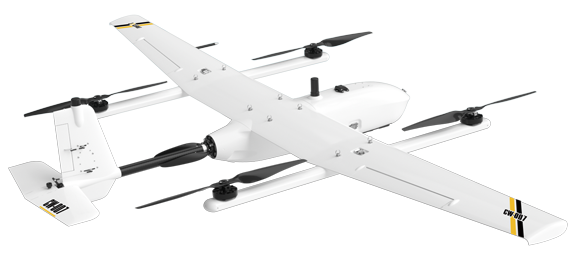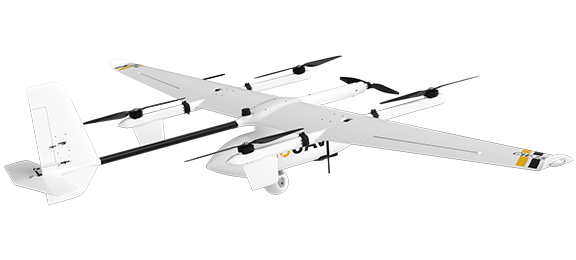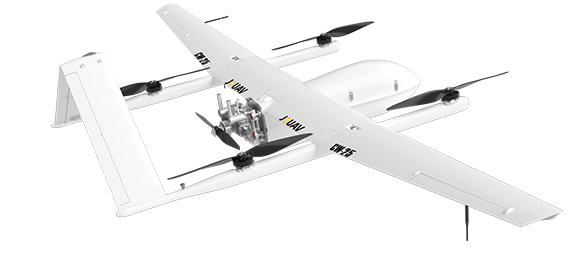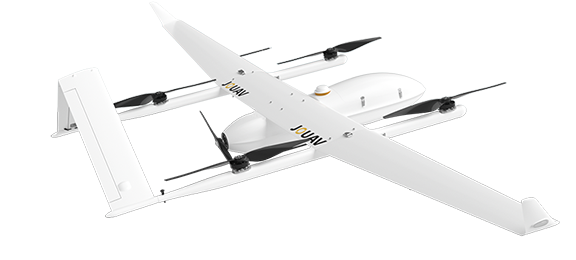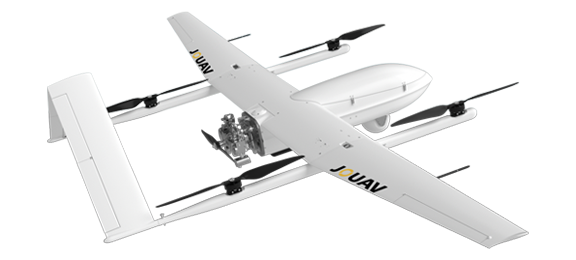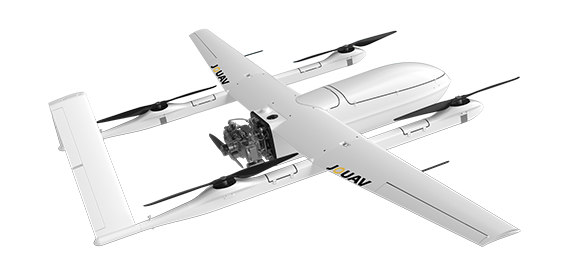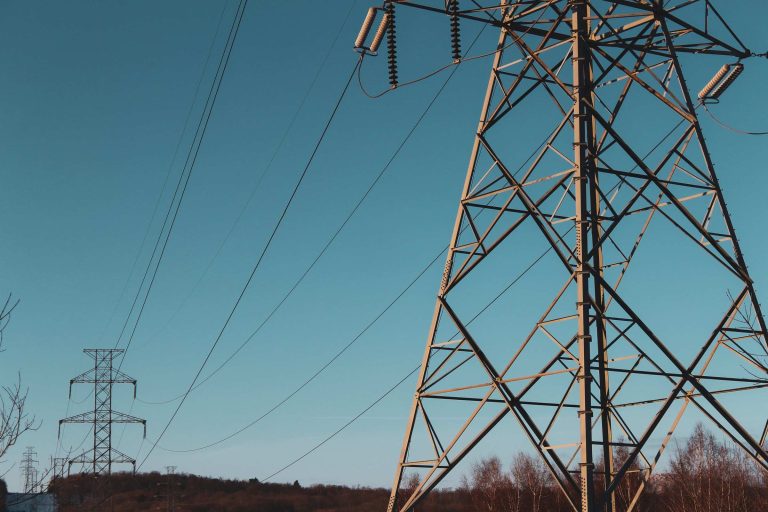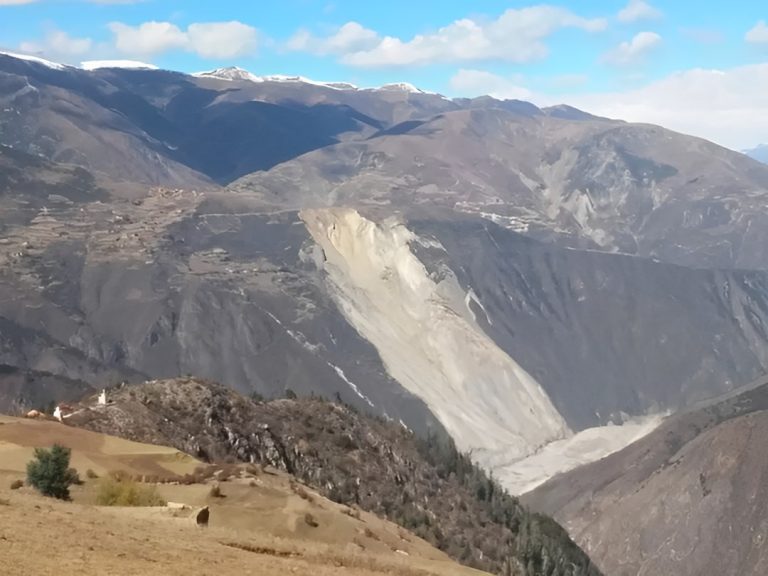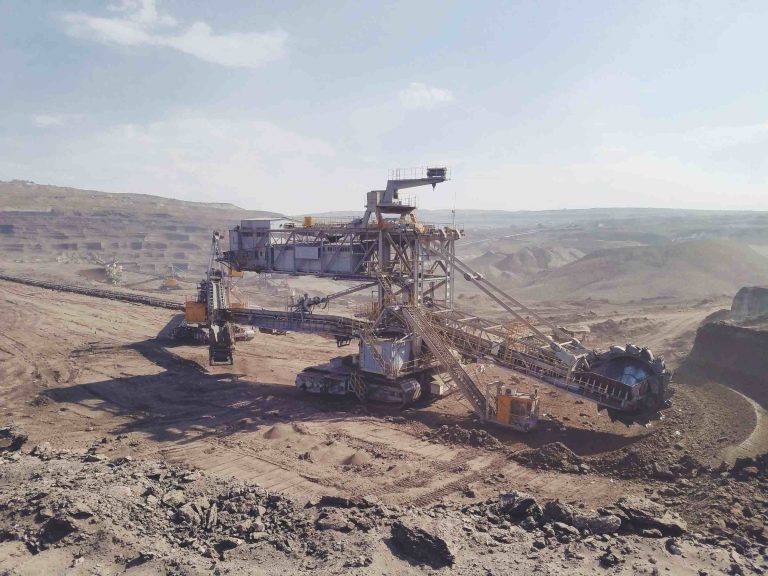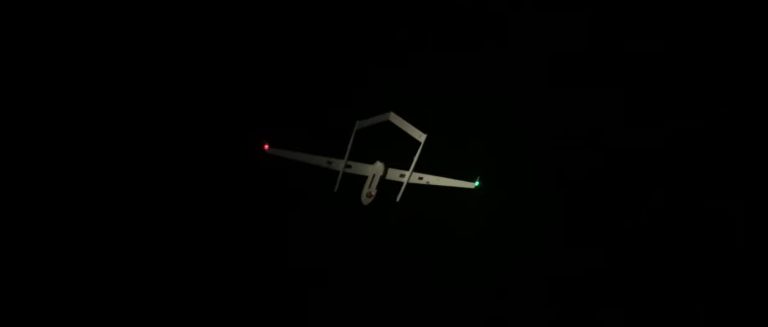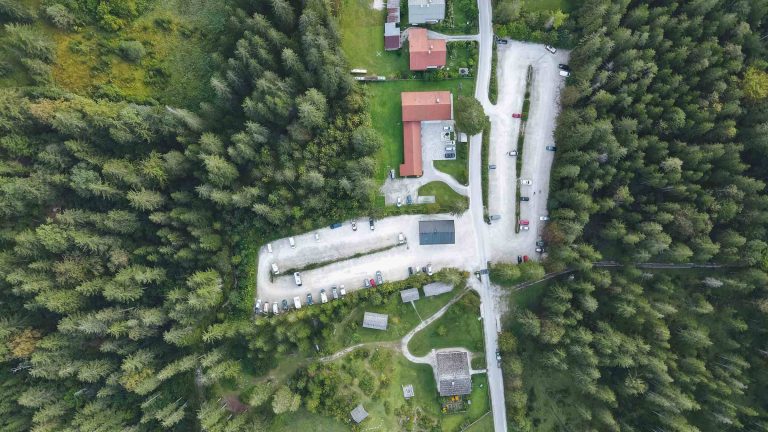A VTOL drone refers to a UAV that can take off and land vertically like a helicopter. The VTOL drone is also often known as the VTOL UAV or VTOL UAS. When it comes to this term, people generally indicate two types of UAVs, rotorcraft and VTOL fixed-wing drones.
Multi-rotor drones are VTOLs that use propellers connected to motors to lift themselves, such as helicopters, hexacopters, and octocopters. In contrast, VTOL fixed-wing drones combine the characteristics of multi-rotor and fixed-wing drones, which take off and land vertically and have excellent cruising efficiency.
In the right video, you can see the whole process of vertical takeoff, cruise, and vertical landing of the JOUAV VTOL drone.
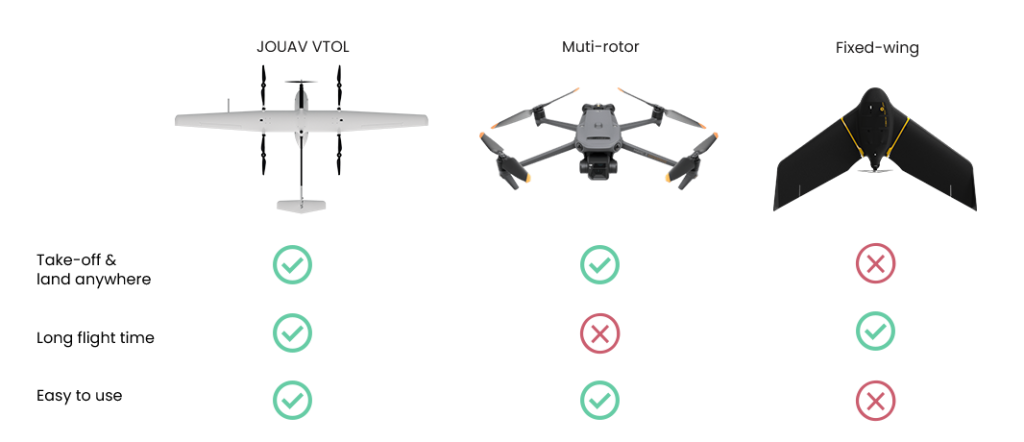
JOUAV CW Series VTOL drones or vertical take-off and landing drones can take off, hover around, and land vertically almost anywhere. With a high-resolution camera, RTK, and PPK module, the VTOL UAVs ensure you get the maxumium large coverage and cetimeter-level aerial mapping. A thermal version is available for firefighting, search and rescue, inspection, and surveillance.
Take off and land anywhere
As the best VTOL fixed-wing drone, JOUAV CW series drones combine fixed-wing and multi-rotor aircraft that can take off and land anywhere, whether in confined places, on gravel, between tree stands, mountainous areas and even on the moving vehicles and ships.
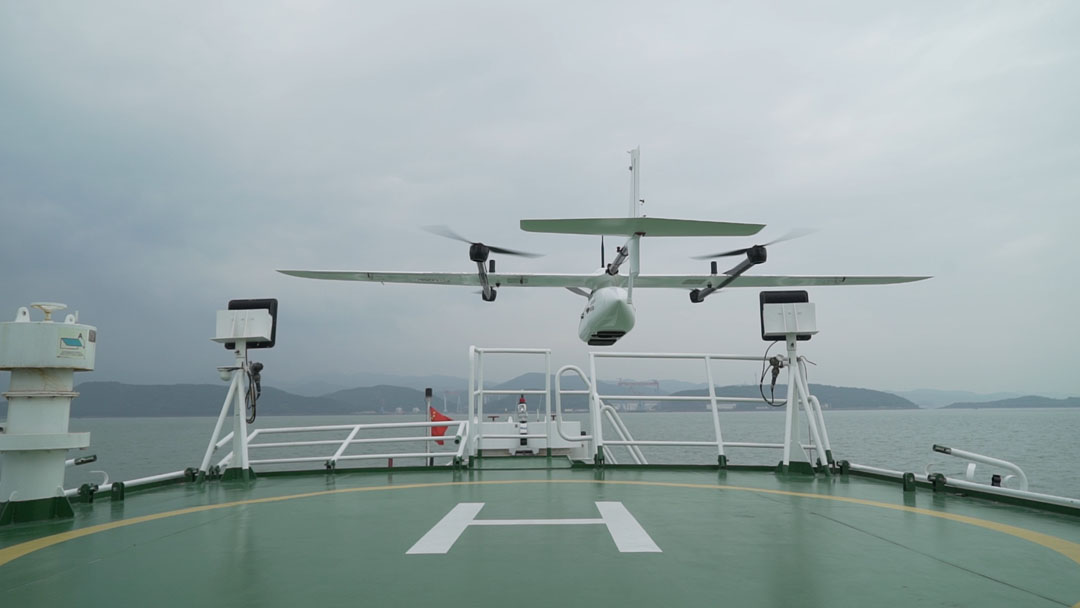
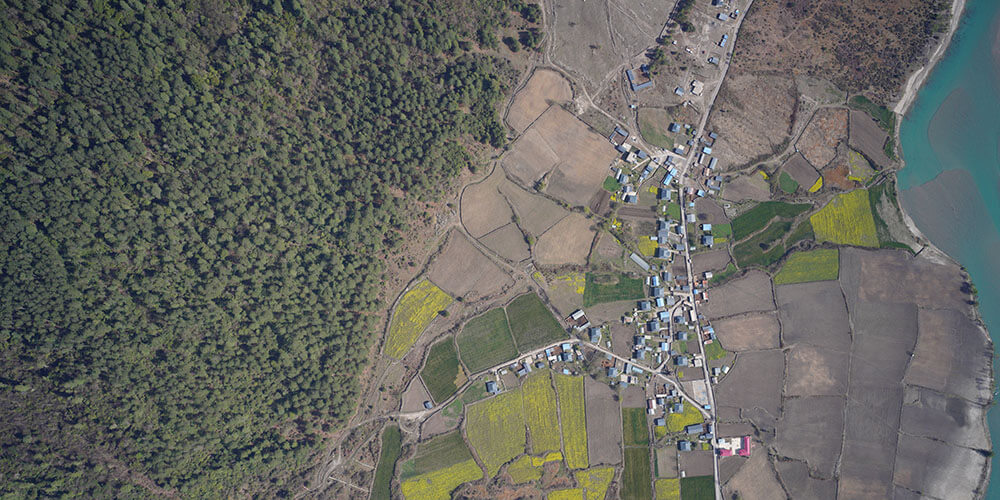
High resolution & accuracy
With 61MP full-frame camera and a multi-frequency PPK GNSS receiver, JOUAV CW Series drones deliver best-in-class Ground Sampling Distance of 5-8mm per pixel and absolute horizontal accuracy down to 1cm under optimal conditions.
Large coverage
A maximum flight time of 840 minutes with the fastest cruising speed of 135 km/h and a control range of 200km enables the JOUAV VTOL drones to quickly cover large areas, or even multiple sites at once.

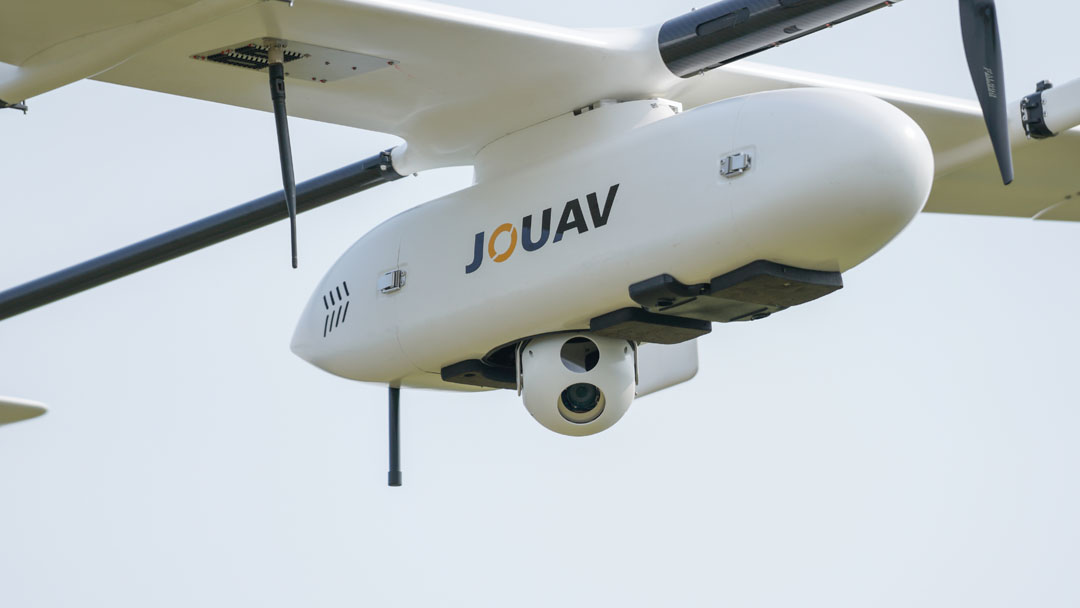
Swappable and large payloads
They can carry payloads weighing from 1 to 25 kg, including 61MP full-frame cameras, Micasense multispectral cameras, thermal sensors, 305MP oblique cameras, etc. These payloads are interchangeable, which saves you the investment by not having to buy multiple UAVs for multiple purposes.
Deployable in harsh environment
With the quad-rotor design, JOUAV CW Series drones meet the need for horizontal flight mode, making the VTOL airplane more stable in attitude. These drones can safely fly in sustained winds up to 13.9m/s and gusts up to 17.1m/s. They also have self-heating airspeed tubes that can operate in high altitudes, high humidity, low temperature, and light rain condition.
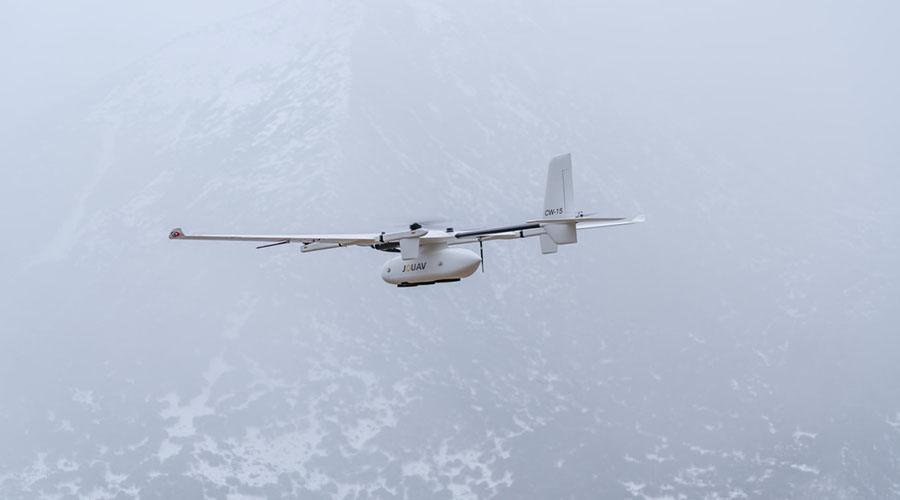
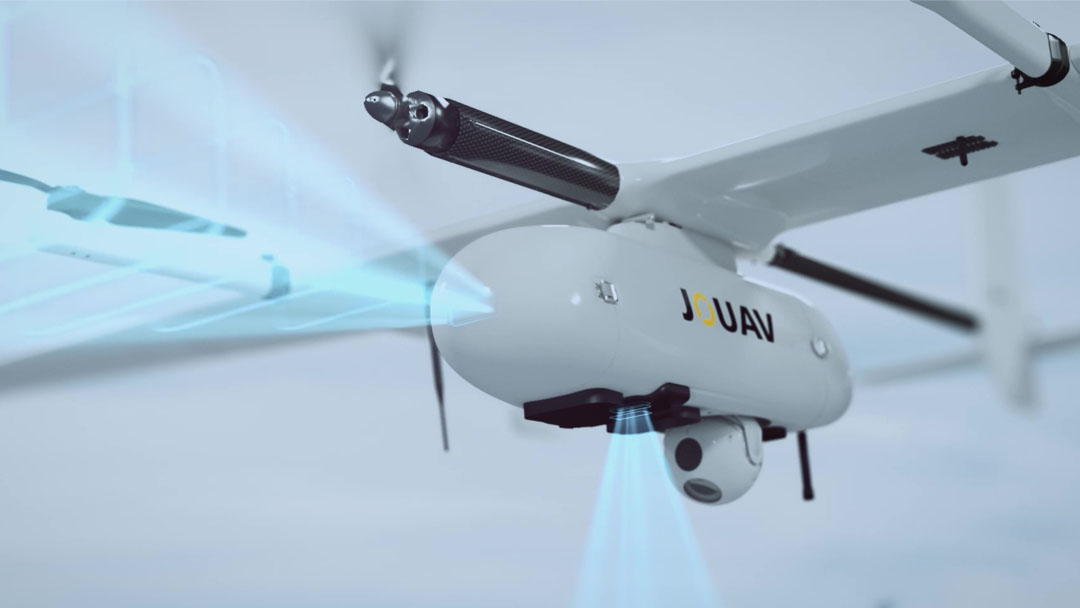
Fully autonomous
JOUAV drones autonomously take off, follow the flight plan to take images, and land without any human pilot. Their onboard obstacle avoidance sensors and ADS-B system make sure these drones detect and avoid obstacles in the flight path to prevent crashes. The VTOL drones also have Return-to-Home features that ensure the drones land safely when losing the signal.
Due to their ease of control, take-off and landing ability, and high flight efficiency, JOUAV CW Series drones expand and enhance the applications of UAVs. Explore VTOL UAV solutions for your industry.
Many companies in different industries have already benefited from the use of JOUAV VTOL drones. Discover how JOUAV solutions are used around the world.
What does VTOL stand for?
VTOL stands for Vertical Take-off and Landing, and as the name suggested, indicates an aircraft that can take off, hover, and land vertically like a helicopter instead of needing to speed up over a runway. The VTOL drone design includes fixed-wing aircraft with the ability to take off and land vertically, helicopters, and other aircraft with powered rotors, such as rotorcraft and tiltrotors.
How do VTOL drones work?
The flight of a VTOL UAV consists of several stages, including vertical takeoff and hover, transition from hover to stable horizontal flight, transition from stable horizontal flight backward to hover, and finally landing. For vertical flight, the rotor is angled so that the plane of rotation is horizontal, like a helicopter. As the VTOL airplane speed increases, the rotor blades tilt forward and the plane of rotation eventually becomes vertical. The wings then provide lift while the rotor blades provide thrust like a propeller.
Types of VTOL drones
Unmanned convertiplanes and tail-sitter UAVs are the two most widely-used types of hybrid fixed-wing VTOL drones. Here is the list of VTOL aircraft:
Unmanned convertiplanes
Unmanned convertiplanes are UAVs that use rotor power for vertical takeoff and landing and convert to fixed-wing lifts in normal flight. There are three types of such UAVs:
- Tilt-rotor UAVs: The powered rotor of a tilt-rotor aircraft is mounted on a rotating shaft or nacelle at the tip of a fixed wing and is capable of vertical propulsion and horizontal rotation during flight. When flying vertically, the UAV's rotors provide upward thrust, allowing it to lift like a helicopter rotor. As the speed of the aircraft gradually increases, the rotor becomes perpendicular to the fuselage of the aircraft, similar to a propeller.
- Tilt-wing UAVs: Similar to a tilted plane, tilt-wing drones have two or more rotors but differ in that their rotors are mounted on the wings and the entire wing is tilted between vertical and horizontal positions. Tilt-wing UAVs use propellers placed along their fixed wings for vertical takeoff and landing and can rotate horizontally in flight for horizontal flight once they reach the right speed and altitude.
- Quadplanes: As some of the most popular types of hybrid fixed-wing VTOL UAVs, quadplanes combine fixed-wing drones and a classical quadcopter. Quadcopters use vertically oriented propellers for vertical takeoff and landing, use horizontally oriented propellers and fixed wings once sufficient forward speed and altitude are achieved, and then deactivate these propeller units when transitioning to horizontal flight.
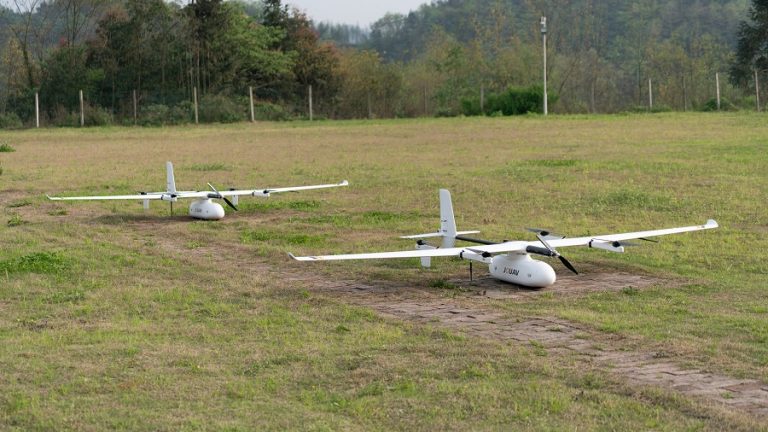
Tail-sitters
Unlike many other types of VTOL technology, tail-sitters take off and land with their tail and then tilt forward horizontally. After takeoff, the whole system tilts like a forward and then flies horizontally like a fixed-wing drone.
What are some advantages of VTOL UAS?
VTOL aircraft require little space to launch and recover because they do not require the use of runways. They are not restricted by any site and can work in mountainous areas, complex mines, and mountain forests.
The hovering capabilities of VTOL aircraft are particularly important to those working in the construction and infrastructure industries. They can fly VTOL aircraft with video cameras or other sensors to enter spaces that are dangerous to workers for inspection, avoiding danger to workers.
Another advantage of VTOL UAVs is their rapid deployment capability, which is crucial for those working in emergency response. These types of drones can take off within minutes to dangerous areas that may be difficult for humans to reach.
VTOL drones are more maneuverable than fixed-wing drones, due to their ability to vary the relative speed of each rotor, which produces changes in thrust and torque. Even pilots with little flight experience can fly with confidence after a little training.
A final significant advantage of VTOL aircraft is their ability to achieve translational flight. They can easily perform fast, slow, longitudinal, and lateral movements.
What are the disadvantages of VTOL aircraft?
Although VTOL drones have strong elements, they do not come without disadvantages. VTOL drones are typically very expensive because of their often complex production and maintenance costs, allowing them to transition smoothly and safely between vertical and horizontal flight.
VTOL UAVs have a lower endurance compared to fixed-wing UAVs. This is because VTOL UAVs require more power to generate lift and thrust from their rotor blades, while fixed-wing aircraft only need their propulsion system to generate thrust, and their lift is generated by the wings, thus saving more energy.
How fast can VTOL fly?
Depending on the motor, mode of operation, and outdoor conditions, VTOL drone speed varies from a slow 5km/h (3.1mph) to a much higher 350km/h (217.5mph) and up.
How long can VTOL fly?
The flight time of consumer VTOL drones ranges from 5 minutes to 1 hour. Flight times for professional VTOL drones range from 30 minutes to 8 hours.
How much can a VTOL drone carry?
The payload capacity of consumer VTOL drones ranges from 50 grams (1.8 ounces) to 1 kilogram (2.2 pounds) on average, while the payload capacity of professional VTOL drones ranges from 500 grams (1.1 pounds) to over 400 kilograms (882 pounds). The main factors include the weight of the drone and the lift that its propulsion system can generate.
How to choose the best VTOL drones?
There is a lot to think about before buying a VTOL drone. You need to consider your specific application and the image resolution, accuracy, and coverage it requires. The cost will also play an important role.
How much do VTOL drones cost?
The price of a customer VTOL aircraft goes from $300 up to $3,000, while a professional VTOL drone costs an average of $3,000 to $300,000 and up.
Who is the best VTOL drone manufacturer?
As the first industrial drone company listed in China (688070. SH), JOUAV is an international leader in products and technologies in the field of small and medium-sized UAVs, with a complete product spectrum of vertical take-off and landing fixed-wing and multi-rotor. It provides reliable and comprehensive solutions for security and emergency, energy inspection, mapping, defense, and other fields.
Feel free to contact JOUAV. What we can help you:
